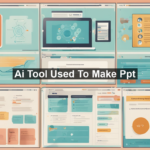Imagine speaking into a device and seeing your words effortlessly transform into text within seconds. Welcome to the world of AI-powered voice-to-text tools! In a rapidly evolving digital landscape, these tools are not only a game-changer for enhancing productivity but also a boon for accessibility and convenience. This article delves into the intricacies of voice-to-text AI tools, shedding light on their significance, practical applications, and offering expert advice on how to choose the right one for your needs.
What Are AI Voice-to-Text Tools?
AI voice-to-text tools are sophisticated software applications that utilize artificial intelligence and machine learning algorithms to convert spoken language into written text. They are designed to understand and transcribe speech with remarkable accuracy, making them invaluable in various fields such as business, education, and personal productivity.
Why Are They Important?
The need for efficient and reliable transcription services has surged with the influx of digital communication. AI voice-to-text tools cater to this demand by offering numerous benefits:
- Increased Productivity: By automating the transcription process, these tools save hours that would otherwise be spent typing.
- Accessibility: For individuals with physical disabilities or those who find it challenging to type, speech-to-text technology provides a vital means of communication.
- Accuracy and Speed: Advanced algorithms ensure high accuracy and fast transcription, making these tools reliable for professional use.
Common Questions About AI Voice-to-Text Tools
1. How Do AI Voice-to-Text Tools Work?
These tools typically employ a combination of Automatic Speech Recognition (ASR) and Natural Language Processing (NLP) technologies. ASR transcribes the spoken words into text, while NLP algorithms ensure the context is appropriately captured, refining the accuracy. Training data comprised of thousands of hours of recorded speech enables these models to discern different accents, dialects, and languages effectively.
For those looking to delve deeper into how these technologies work, consider exploring this detailed article on speech recognition technologies.
2. What Are the Key Features of a Good Voice-to-Text Tool?
When selecting a voice-to-text tool, consider the following features:
- Accuracy: The tool should have a high accuracy rate in recognizing and transcribing speech.
- Language Support: A good tool should support multiple languages and dialects.
- Real-time Transcription: The ability to transcribe speech in real-time is a significant advantage for dynamic environments like live conferences or meetings.
- Customization: Some tools allow users to add custom vocabularies, which is useful for specialized fields such as medicine or law.
- Integration: Compatibility with other software applications you use can improve workflow efficiency.
3. Are AI Voice-to-Text Tools Secure?
Security is a legitimate concern, especially when dealing with sensitive information. Most reputable AI voice-to-text tools incorporate robust security measures like data encryption during transmission, stringent access controls, and compliance with privacy regulations such as GDPR. For highly sensitive tasks, choose a tool that emphasizes security features and has positive evaluations from credible sources.
For further reading on data security measures in AI, this article on data security provides a comprehensive overview.
4. How Much Do These Tools Cost?
The cost of AI voice-to-text tools can vary widely:
- Free Versions: Basic versions of these tools are often available for free, offering limited features suitable for occasional use.
- Subscription-based Models: These provide enhanced functionalities and are ideal for regular users, typically ranging from $10 to $30 per month.
- Enterprise Solutions: For businesses requiring extensive use and additional features, enterprise solutions are available. These can be customizable and priced based on specific needs.
It’s advisable to start with a free or trial version of a tool to evaluate its features before committing to a purchase.
Popular AI Voice-to-Text Tools
Let’s take a look at some leading AI voice-to-text tools in the market:
1. Google Speech-to-Text
Google’s tool is renowned for its advanced machine learning algorithms and the ability to support over 120 languages. It offers real-time transcription and is integrated with Google Cloud, making it a robust option for developers and businesses.
2. Dragon NaturallySpeaking
Dragon by Nuance is a popular choice for professionals due to its high accuracy and speed. It offers customization options, including the ability to create custom voice commands, making it ideal for specialized industries.
3. Otter.ai
Otter.ai is favored for its affordable pricing and real-time collaboration features. It supports multiple devices and is particularly strong in transcribing meetings, interviews, and lectures with high accuracy.
Choosing the Right Tool for You
Ultimately, the best AI voice-to-text tool for you depends on your specific needs and preferences. Consider factors like the nature of your transcription tasks, the languages and dialects you need support for, and your budget constraints.
For a deeper dive into selecting the right tools, you can explore this guide on best speech-to-text apps.
In conclusion, AI voice-to-text tools are transforming the way we convert speech into written words, offering unprecedented convenience and efficiency. By understanding how these tools work, their key features, and considering your specific needs, you can select a tool that significantly enhances your productivity and accessibility. Welcome to hands-free writing—one spoken word at a time!











